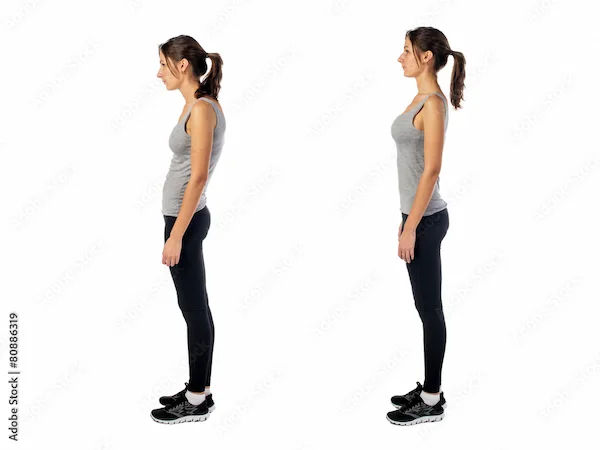Kyphosis Exercises for Back
Combat kyphosis with simple, effective exercises. Learn how to strengthen your back, improve posture, and reduce discomfort with our practical, step-by-step guide.

Written by Dr.Sonia Bhatt
Last updated on 3rd Jul, 2025

Kyphosis is a condition that affects the curvature of the spine. While some degree of spinal curvature is standard, excessive kyphosis can cause discomfort and impact overall health. This blog aims to provide effective exercises to help manage and improve kyphosis, enhance your posture, and reduce pain.
Understanding Kyphosis
Kyphosis is characterised by an exaggerated forward curve of the upper spine, resulting in a hunchback appearance. There are several types of kyphosis, including postural kyphosis, often seen in adolescents and usually related to poor posture, and degenerative kyphosis, which can occur in older adults due to wear and tear on the spine. Congenital kyphosis is a rare condition that occurs when the spine does not develop properly in the womb.
Symptoms of Kyphosis
The symptoms of kyphosis can vary depending on the severity of the condition. Common physical symptoms include:
A noticeable hunch in the upper back
Back pain or discomfort
Stiffness in the spine
Fatigue after prolonged sitting or standing
In addition to physical symptoms, kyphosis can also have psychological effects. Many individuals with kyphosis may experience low self-esteem or body image issues due to their appearance.
Diagnosis and Assessment
It is essential to consult a healthcare professional if kyphosis is suspected. Diagnosis typically involves a physical examination and may include imaging tests, such as X-rays, to assess the degree of curvature. Early diagnosis and intervention can help prevent further complications.
Benefits of Exercise for Kyphosis
Regular exercise plays a crucial role in managing kyphosis by strengthening supportive muscles, improving flexibility, and enhancing posture.
Strengthening Muscles: One primary benefit of exercise for individuals with kyphosis is strengthening the muscles that support the spine. Core muscles are important for maintaining proper posture and alignment, and targeted exercises can help improve overall spinal health.
Increasing Flexibility: Flexibility is vital for spinal health, allowing for a more excellent range of motion and reducing stiffness. Stretching exercises can help lengthen tight muscles and improve flexibility, making daily activities more comfortable.
Enhancing Posture: Regular exercise can significantly improve posture. By strengthening the muscles that support the spine and increasing flexibility, you can maintain proper alignment and reduce the risk of developing further postural issues.
Recommended Exercises for Kyphosis
Incorporating specific exercises into your routine can help manage kyphosis by strengthening the back muscles, improving flexibility, and promoting better posture. Here are some recommended exercises:
1. Warm-Up Exercises
Before starting any exercise routine, it’s essential to warm up the muscles. A proper warm-up prepares your body for physical activity and helps prevent injury. Here are a few gentle warm-up exercises:
Neck Rolls: Slowly roll your head in a circular motion, clockwise and counterclockwise. Repeat for 30 seconds.
Shoulder Shrugs: Raise your shoulders towards your ears and then release them down. Repeat 10 times.
Arm Circles: Extend your arms to the sides and make small circles, gradually increasing the size. Do this for 30 seconds in each direction.
2. Strengthening Exercises
Strengthening exercises help build muscle support for the spine, improving posture and reducing kyphosis-related discomfort. These exercises target the upper back, shoulders, and core to enhance stability and alignment.
1.Wall Angels
Stand with your back against a wall, feet a few inches away from the wall.
Press your lower back, shoulders, and head against the wall.
Raise your arms to shoulder height, bending your elbows at 90 degrees.
Slowly slide your arms up and down the wall while keeping your back flat.
Repeat 10 times.
Benefits: Strengthens the upper back and improves shoulder mobility.
2.Seated Rows
Sit on the floor with your legs extended in front of you.
Use a resistance band or a cable machine, holding the ends with both hands.
Pull the band towards your torso, squeezing your shoulder blades together.
Slowly return to the starting position.
Repeat 10-15 times.
Benefits: Strengthens the upper back and improves posture.
3.Superman Exercise
Lie face down on the floor with your arms extended in front of you.
Simultaneously lift your arms, chest, and legs off the ground, holding for a few seconds.
Lower back down and repeat 10-15 times.
Benefits: Strengthens the lower back and glutes.
4.Plank Variations
Start in a push-up position, keeping your body in a straight line from head to heels.
Hold the position for 20-30 seconds, gradually increasing the time as you get stronger.
You can also try side planks by lying on your side and lifting your body off the ground, supported by one arm.
Benefits: Strengthens the core and stabilises the spine.
3. Stretching Exercises
Stretching helps improve flexibility, relieve tension, and counteract muscle tightness caused by poor posture. These exercises promote spinal mobility and make everyday movements more comfortable.
1.Chest Stretch
Stand in a doorway and place your arms on the door frame at shoulder height.
Step forward gently until you feel a stretch in your chest and shoulders.
Hold for 20-30 seconds and repeat 2-3 times.
Benefits: Opens up the chest and counteracts the forward rounding of the shoulders.
2.Cat-Cow Stretch
Start on your hands and knees in a tabletop position.
Inhale as you arch your back, lifting your head and tailbone (Cow Pose).
Exhale as you round your back, tucking your chin and pelvis (Cat Pose).
Repeat this sequence for 10-15 cycles.
Benefits: Increases flexibility in the spine and relieves tension.
3.Child’s Pose
Kneel on the floor and sit back on your heels.
Reach your arms forward on the ground, lowering your forehead to the floor.
Hold this position for 30 seconds to 1 minute.
Benefits: Stretches the back and promotes relaxation.
4.Thoracic Extension
Sit on a chair with your feet flat on the ground.
Place your hands behind your head and gently arch your upper back, looking up towards the ceiling.
Hold for a few seconds and return to the starting position. Repeat 10 times.
Benefits: Improves mobility in the thoracic spine and counteracts slouching.
4. Posture Correction Exercises
Posture correction exercises focus on retraining the muscles to maintain proper alignment. By strengthening the muscles that support the spine and reducing forward rounding, these exercises help prevent worsening kyphosis.
1.Shoulder Blade Squeeze
Sit or stand with your arms at your sides.
Squeeze your shoulder blades together as if trying to hold a pencil between them.
Hold for 5 seconds and release. Repeat 10-15 times.
Benefits: Strengthens the muscles between the shoulder blades and improves posture.
2.Chin Tucks
Sit or stand with a straight back.
Gently tuck your chin towards your chest, keeping your head level.
Hold for 5 seconds and release. Repeat 10-15 times.
Benefits: Strengthens the neck muscles and helps align the head over the spine.
3.Bridges
Lie on your back with your knees bent and feet flat on the floor.
Lift your hips towards the ceiling, squeezing your glutes at the top.
Hold for a few seconds before lowering back down. Repeat 10-15 times.
Benefits: Strengthens the lower back, glutes, and core.
Additional Tips for Managing Kyphosis
To see improvements in your kyphosis, aim to perform the above-mentioned exercises at least 3-4 times a week. Each session should last around 20-30 minutes, allowing time for warm-up, strengthening, stretching, and posture correction exercises.
Incorporate a mix of strengthening, flexibility, and posture correction exercises. For example, you might start with warm-up exercises, 2-3 strengthening exercises, then 2-3 stretching exercises, and finish with posture correction exercises.
It’s crucial to listen to your body while exercising. If you experience pain or discomfort, modify the exercise or take a break. If you’re unsure about any movements, consider seeking guidance from a healthcare professional or a qualified fitness instructor.
Making ergonomic adjustments in your daily life can significantly impact your posture. Ensure your workstation is set up correctly, with your computer screen at eye level and your chair providing adequate support. When sitting, keep your feet flat on the ground and avoid slouching.
It may be beneficial to consult a physical therapist or chiropractor if you’re struggling to manage your kyphosis or if your symptoms worsen.
Conclusion
Exercise is vital to manage kyphosis and improve back health. Incorporating strengthening, flexibility, and posture correction exercises into your routine can enhance your posture, reduce pain, and improve your overall quality of life.
Consult Top Orthopaedicians
Consult Top Orthopaedicians
Dr. Anil Sharma
Orthopaedician
42 Years • MBBS, MS Orthopedics
New Delhi
AAKASH MEDSQUARE, New Delhi

Dr. Sourav Kumar Pal
Orthopaedician
3 Years • MBBS, MS(ORTHO)
Malda
B S ORTHO, Malda

Dr. Manoj Dinkar
Orthopaedician
15 Years • MBBS, Dip (Orthopaedics)
New Delhi
THE DOCTORS NESST, New Delhi

Dr. Mriganka Ghosh
Orthopaedician
11 Years • MD (Physician), DNB (Orthopaedics)
Howrah
Dr Mriganka Mouli Ghosh, Howrah

Dr. Pradeep Lucas
Orthopaedician
7 Years • MBBS, Diploma in Orthopaedics, Fellowship in DFSI
Bengaluru
Revival Multispeciality Clinic, Bengaluru